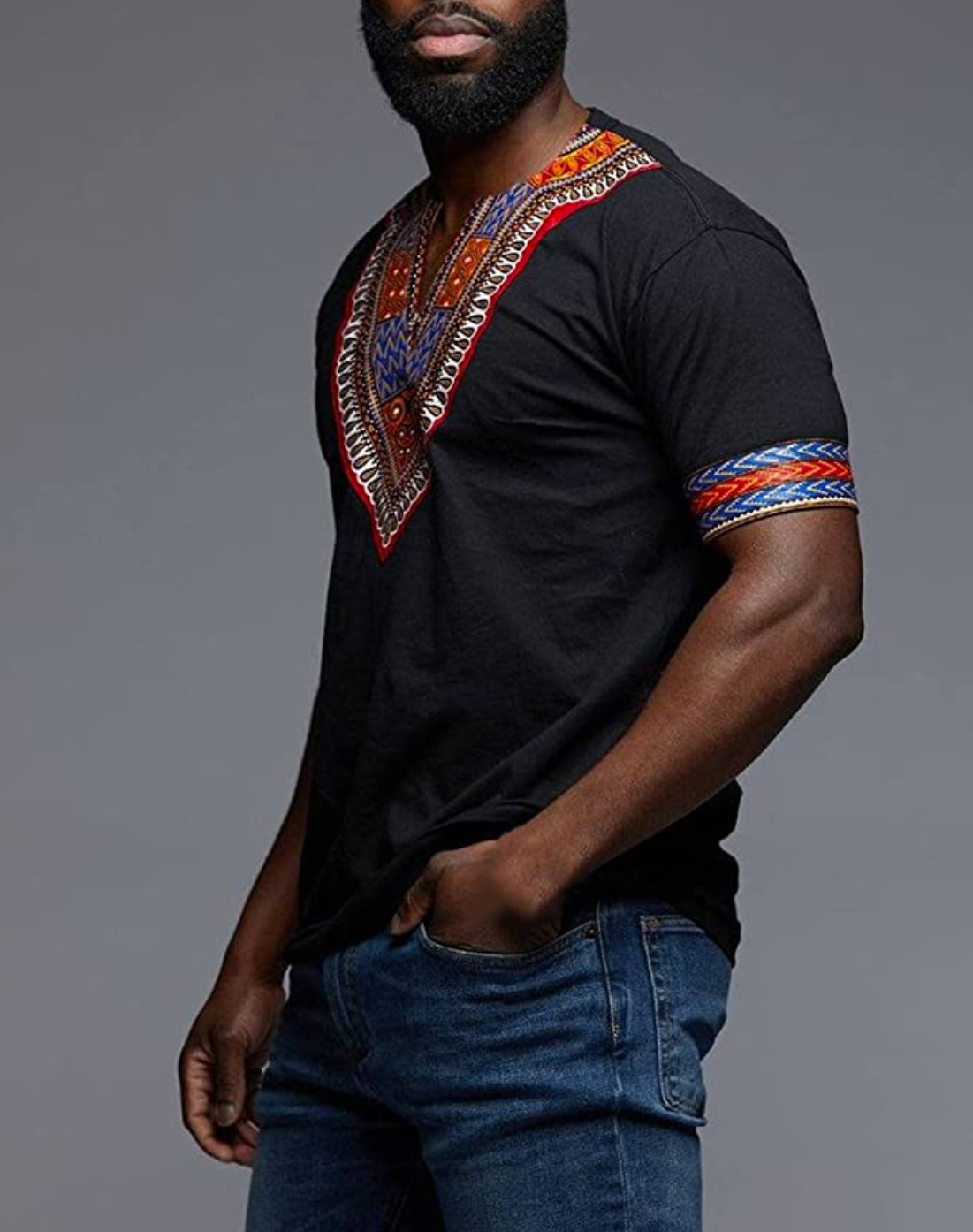For some people, wearing an African dashiki is a tradition in Black History Month. This probably is the reason why dashiki sales soar so high during February. Dashikis are directly associated with Africa, and instantly recognizable as an African look. In Nigeria and many other African countries, dashikis are worn for comfort in the hot climate. In America, the African dashiki sends its own message.
A dashiki is a colorful garment that covers the top half of the body. The dashiki found a market in America during the Black cultural and political struggles in the 1960s. The dashiki rebelled against men’s fashions of that time: brightly colored instead of drab, loose instead of tight, worn outside the pants instead of tucked in. It could be worn defiantly on occasions that normally would call for a coat and tie.
The dashiki was worn as a way to protest society’s disrespect for African Americans. It was a symbol of affirmation, it stood for “black is beautiful,” and signaled a return to African roots, and insistence on full rights in American society.
The militancy of the 1960s may have faded, but the dashiki has not. It still serves as a symbol of Africanness within American culture, especially during Kwanzaa and Black History Month. It is also sometimes worn as a high fashion look or just a colorful, comfortable shirt for all occasions.
Etymology
Dashiki is a Yoruba word that means shirt. The cap worn with a dashiki is called a kufi. Sokoto is the Yoruba word for trousers and is worn with a dashiki. They are not named after the city of Sokoto, in Nigeria.
The dashiki in the West
The dashiki found a market in America during the Black cultural and political struggles in the 1960s. A prototype was developed in 1967 by Jason Benning, Milton Clarke, Howard Davis, and William Smith. These young professionals formed a company called New Breed to produce dashikis. It was located in a 2-room clothing store at 147th Street and St. Nicholas Avenue in the Harlem section of Manhattan. Articles on New Breed appeared in Ebony Magazine and the New York Times (4/20/69).
Dashiki versions
The informal version is a traditional print or embroidered dashiki. Three formal versions exist. The first type consists of a dashiki, Sokoto (drawstring trousers), and a matching kufi. This style is called a dashiki suit or dashiki trouser set and it is the attire worn by most grooms during wedding ceremonies. The second version consists of an ankle-length shirt, matching kufi, and Sokoto. The second style is called a robe or Senegalese kaftan. The third type is usually only worn by Tribal chiefs, Nigerians, or Muslims, and it consists of a dashiki and matching trousers. A flowing gown is worn over these. This type is called a Grand boubou in various Francophone countries. In the English speaking world, it is called an Agbada, see the Grand boubou article for further information.
There are several different styles of dashiki suits available from clothing stores. The type of shirt included in the set determines the name. The traditional dashiki suit includes a thigh-length shirt. The short sleeve, traditional style is preferred by purists. A long dashiki suit includes a shirt that is knee-length or longer. However, if the shirt reaches the ankles, it is called a robe or Senegalese kaftan. Finally, the lace dashiki suit includes a shirt made of lace. A hybrid of the dashiki and caftan worn by females is a traditional male dashiki with a western skirt.
The dashiki today
Formal and festival dashiki styles are often seen on special occasions in West Africa. Perhaps due to immigration, the formal dashiki is also in common use in large Western cities. Many dashikis can be seen at houses of worship including, mosques, and churches and the dashiki is frequently worn at weddings, graduations, and other special occasions.



